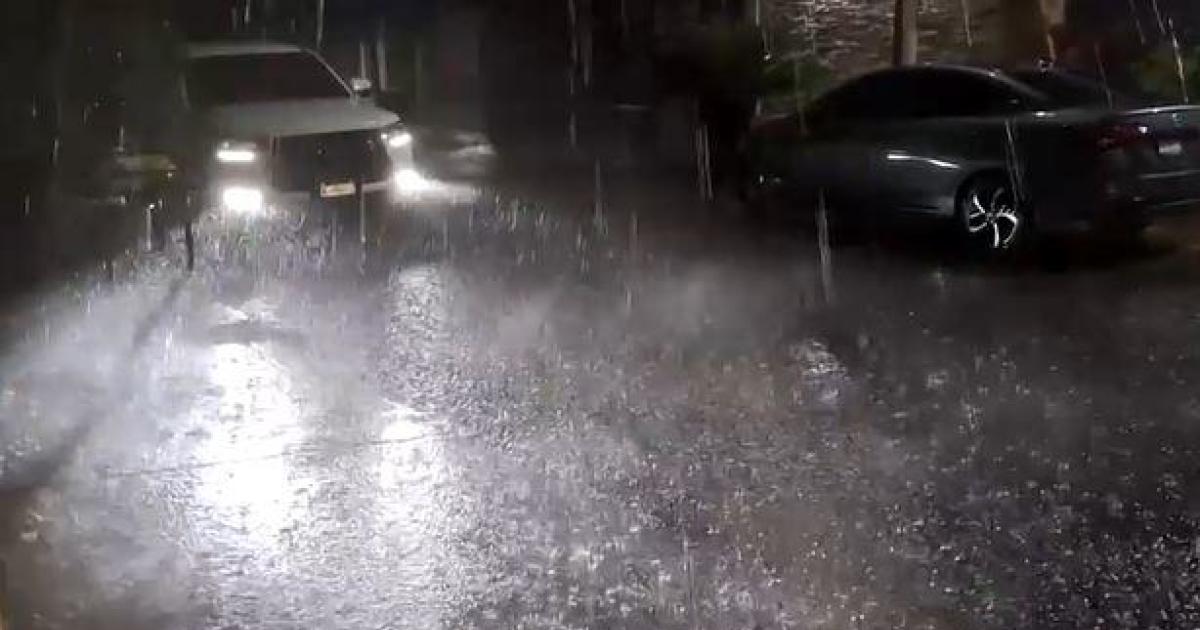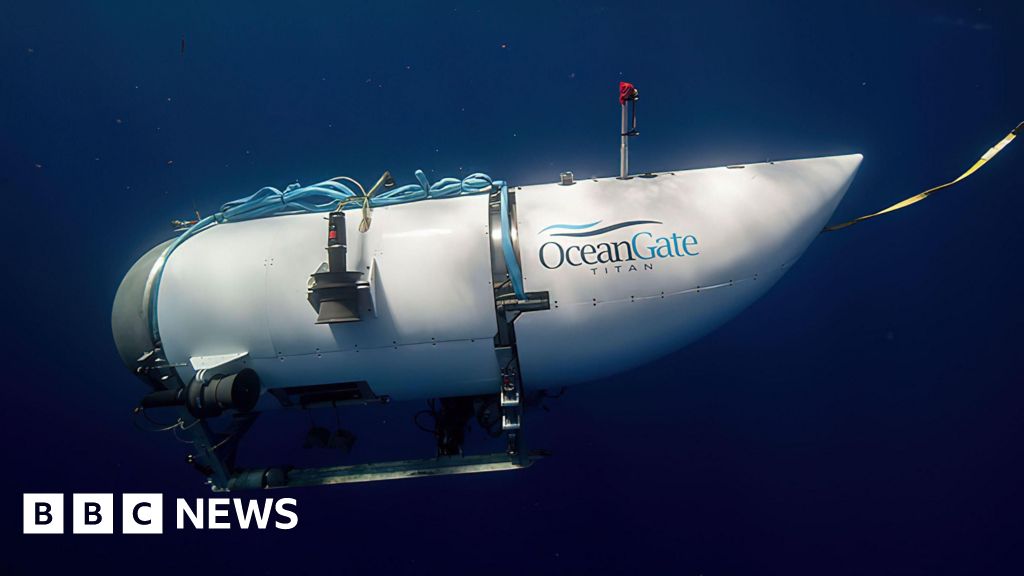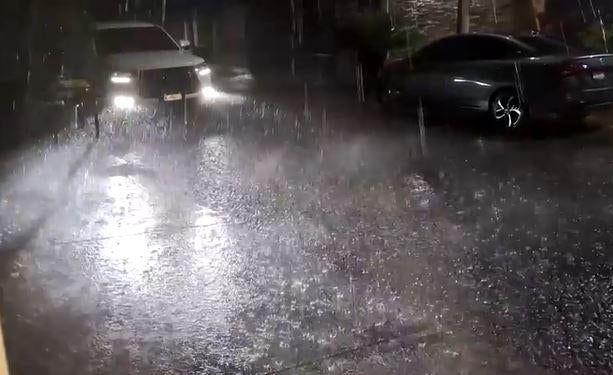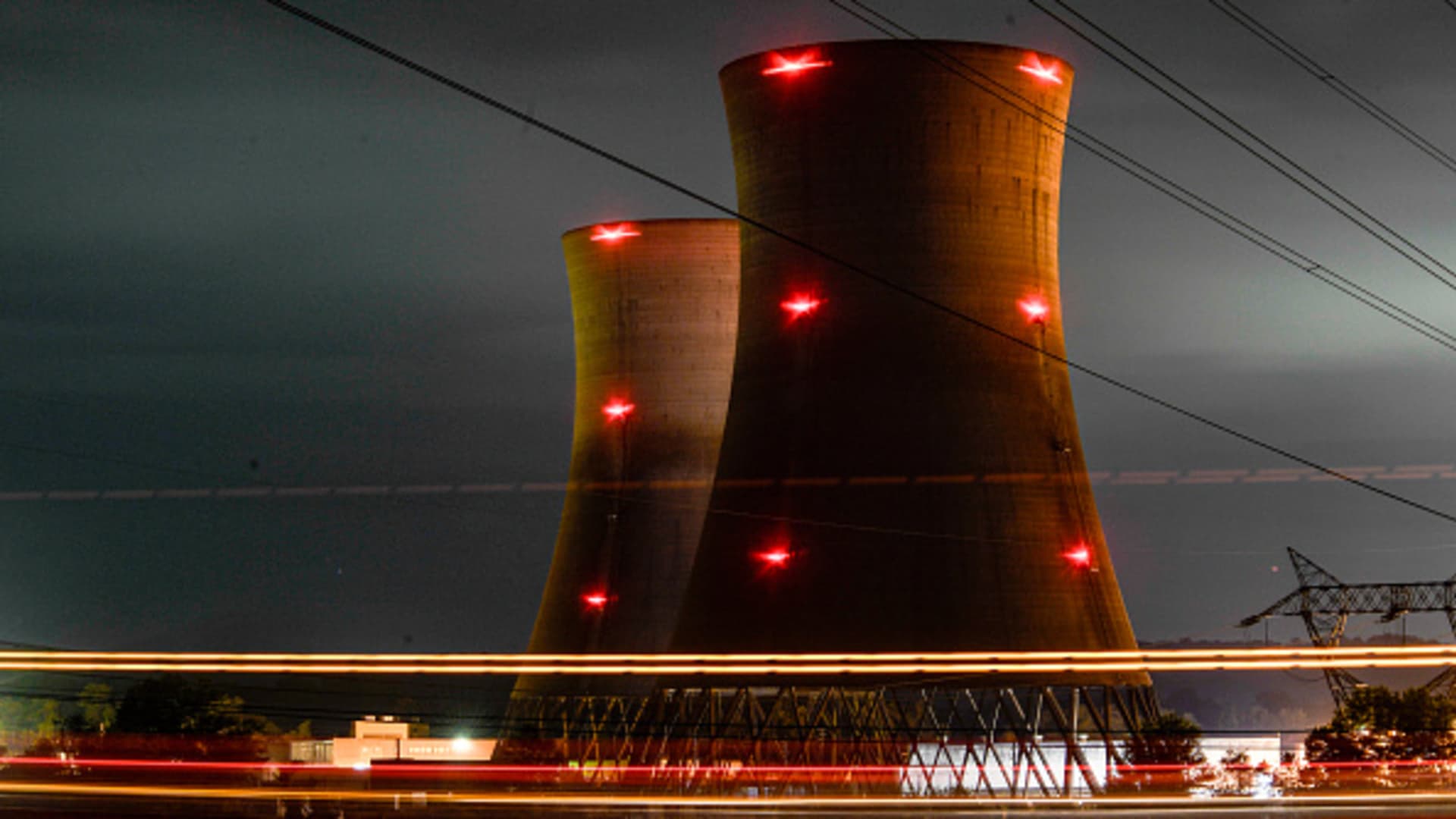Science & Environment
Morgan Stanley sees this stock doubling on eventual data center deal

Science & Environment
Take a look inside a $1.1 million ‘zero emissions’ home

Courtesy: Wojciechowski Family
Real estate is a key puzzle piece in achieving the U.S.’ climate goals, according to federal officials.
Residential and commercial buildings account for 31% of the nation’s greenhouse gas emissions, after accounting for “indirect” emissions like electricity use, according to the Environmental Protection Agency. That’s more than other economic sectors like transportation and agriculture.
The Biden administration has adopted various policies to cut residential emissions.
The Inflation Reduction Act, enacted in 2022, offers financial benefits including tax breaks and rebates to homeowners who make their homes more energy-efficient, for example. The White House also recently issued guidelines for buildings in order to be considered “zero emissions,” meaning they are “energy efficient, free of onsite emissions from energy use and powered solely from clean energy,” according to the Department of Energy.
More from Personal Finance:
How EVs and gasoline cars compare on total cost
Here’s how to buy renewable energy from your electric utility
8 easy — and cheap — ways to cut your carbon emissions
Morgan Wojciechowski, 33, is among the first homeowners to get that federal “zero emissions” label. (That assessment was bestowed by the third-party firm Pearl Certification.)
Wojciechowski, her husband Casey, and their three dogs — Dixie, Bo and Charlie — moved into the newly built residence in Williamsburg, Virginia, in August 2023.
Wojciechowski, who is also the president of Healthy Communities, a local real-estate developer focused on sustainable construction, spoke with CNBC about her new home, its financial benefits and how consumers can best upgrade their homes to be more efficient.
The conversation has been edited and condensed for clarity.
Morgan Wojciechowski and her husband Casey.
Courtesy: Wojciechowski Family
Greg Iacurci: What does it mean for your home to be considered ‘zero emissions’?
Morgan Wojciechowski: It’s a very, very, very highly efficient home that’s all-electric. Those are kind of the first two bullet points of the White House definition.
The third part is we are part of the green energy program with [our power provider] Dominion. Not only am I producing solar [energy] and any excess is going back onto the grid, but the power from the grid coming into my home is clean and sustainable. It’s about $10 extra a month for me to get that clean energy.
GI: How much did your house cost to build?
MW: Like $1.1 million.
GI: And how big is the house?
MW: 5,800 square feet.
It’s a large home. But mine is not what everybody’s doing. My home was my personal project because I believe in sustainability and wanted to do it in a home that would be my forever home. But one that’s more replicable would be like what [Healthy Communities] builds at Walnut Farm, which is like 1,500 square feet. We’re selling it for $433,000.
GI: Can you break down your home’s estimated savings?
MW: Our utility bills are projected to be about $917 a year with [solar] panels, or around $80 a month.
The annual savings are $7,226 [relative to an average U.S. home, according to rater TopBuild Home Services]. That’s just from the efficiency of the home with solar.
If you took the solar production away, I would be saving $5,431 annually. The solar offsets it.
Courtesy: Wojciechowski Family
Courtesy: Wojciechowski Family
Courtesy: Wojciechowski Family
Courtesy: Wojciechowski Family
Courtesy: Wojciechowski Family
GI: What do you mean solar offsets it?
MW: You create energy. Your home uses that energy and sends excess energy back to Dominion. Those credits are stored in an account, and then those credits offset your bill. It’s called net metering.
GI: So the power company is paying you that money?
MW: Those credits are applied to your next billing cycle. They offset your overall utility bill, and that’s where your savings come in.
Solar panels only make sense if you build an energy-efficient home that’s really all-electric.
Courtesy: Wojciechowski Family
GI: Why is that?
MW: You have to have a home that’s constructed energy-efficiently enough or retrofitted — by replacing your windows with higher-grade windows, adding insulation — so that you will need fewer panels on your rooftop, so you have a quicker return on your investment. Solar only makes sense if you’re going to have a return on your investment within a few years.
GI: That makes solar more attractive?
MW: If you don’t do energy-efficient upgrades to a pre-existing home or if you don’t build a home that’s energy-efficient enough, you have to add more panels to compensate for the lack of energy efficiency. And if that number gets too big it turns people upside down.
Solar has to make sense with the home that you’re putting it on, or else, don’t do it. Maybe just upgrade your windows, add insulation, condition your crawl space, upgrade your mechanical systems.

There are a lot of things consumers can do. You don’t have to do it all at one time. You don’t have to have a solar home to be zero emissions; you have to have an energy-efficient house that’s all-electric, and you have to buy renewable energy from your utility company.
That’s extremely approachable. Lots of people can do that. Everybody can join in at their level of sustainability.
GI: How do you recommend people get started?
MW: I would tell a consumer, why don’t you start with windows and doors. That’s a very easy one. Do that and see how you notice any [efficiency] changes.
In a lot of older homes windows are very old and they leak. Air is coming in and out. If you think about it, a house is like an envelope. You you want to seal the inside of your home the best that you can.
I would hit insulation next.
A lot of older homes have HVAC systems, duct work inside of their attic. Insulate it so that it’s a conditioned space, so that those building systems don’t have to work in overdrive to keep up with really hot temperatures or really cold temperatures. That keeps it more energy efficient.
And there are tax incentives [available] for energy-efficient upgrades to your home. Consumers can get and write them off, so that’s attractive to people as well.
GI: If you’re a renter, there are certain things that are out of your control. I suppose you can ask your landlord.
MW: Depending upon what your rental situation is. I feel like that’s a little bit more daunting, to change someone else’s mind. Once you get to your own home, eventually, then you have more say of what you can do.
Until then, you could be mindful about the energy you use. Turn lights off. I mean, that’s a real thing. People don’t turn lights off. I mean, even though I have a really efficient home, I have timers on things because I don’t want to be wasting energy. That’s an easy one that anybody could do.
Science & Environment
New species of “ghost shark” discovered living deep in the Pacific Ocean to

Researchers have discovered a new species of “ghost shark” that exclusively lives in the deep waters surrounding Australia and New Zealand.
The “Australasian narrow-nosed spookfish” has a long, pointed nose, as its name indicates, and bulging black eyes. The creature has “chocolate brown” skin and a long, wispy tail, according to New Zealand’s National Institute of Water and Atmospheric Research.
Ghost sharks, formally known as chimaeras, have smooth skin and no scales. They have “distinctive, beak-like teeth,” NIWA said, and primarily eat shrimp and mollusks.
The species lives in the deep waters of the Pacific Ocean, which NIWA scientist Brit Finucci said makes them difficult to study. One ghost shark was caught on camera swimming off the coast of California in 2017. The specimens studied by NIWA to make this identification were found during other research studies for Fisheries New Zealand.
“Their habitat makes them hard to study and monitor, meaning we don’t know a lot about their biology or threat status, but it makes discoveries like this even more exciting,” Finucci said.
The specimens found were thought to be part of a species that can be found around the world, but research revealed the Australasian narrow-nosed spookfish is “genetically and morphologically different to its cousins,” NIWA said.
Finucci gave the species the scientific name “Harriotta avia” in honor of her grandmother.
“Avia means grandmother in Latin; I wanted to give this nod to her because she proudly supported me through my career as a scientist,” Finucci said. “Chimaeras are also rather ancient relatives — the grandmas and grandpas — of fish and I thought the name was well suited.”
Science & Environment
Caroline Ellison could face no jail time for role in FTX collapse

Caroline Ellison, former chief executive officer of Alameda Research LLC, center, arrives at court in New York, US, on Tuesday, Oct. 10, 2023.
Yuki Iwamura | Bloomberg | Getty Images
Caroline Ellison was the star witness in the criminal case against disgraced FTX founder Sam Bankman-Fried. On Tuesday, she will face her own sentencing.
Ellison’s role in the implosion of the crypto empire run by her former boss and ex-boyfriend Sam Bankman-Fried was to lie to investors, help steal billions of dollars from FTX customers, and subsequently re-purpose those funds toward bets and debts accrued at Alameda Research, the digital asset hedge fund she helmed as CEO.
Bankman-Fried and Ellison are both, in the eyes of the U.S. judicial system, guilty of the same crimes.
Two counts of wire fraud, two counts of conspiracy to commit wire fraud, one count of conspiracy to commit securities fraud, one count of conspiracy to commit commodities fraud, and one count of conspiracy to commit money laundering. Those charges carry a statutory maximum sentence of around 110 years, but there’s a sliding scale that takes into account the scope of the crimes and the criminal history of the defendant.
CNBC spoke to former federal prosecutors, trial attorneys and legal experts to get their take on what may be in store for Ellison at Tuesday’s hearing. They agree that Ellison is likely to walk away without any jail time at all.
After a jury of twelve unanimously found Bankman-Fried guilty of all seven criminal charges against him in November, he was sentenced in March to 25 years for his crypto fraud and ordered to pay $11 billion in forfeiture.
Unlike Bankman-Fried, Ellison agreed to a plea deal in December 2022. She pled guilty to all charges against her and spent two years cooperating with the government, regulators and the FTX bankruptcy estate.
Meanwhile, Bankman-Fried continues to deny virtually all criminal wrongdoing and is attempting to get his case retried.
Lawyers for Ellison and Bankman-Fried did not immediately respond to requests for comment.
Government exhibit in the case against former FTX CEO Sam Bankman-Fried.
Source: SDNY
No time behind bars
Cooperation with the prosecution in white collar crimes, even in what has been billed as “one of the biggest financial frauds in American history,” goes a long way.
Ellison was the most important of the several insiders who testified for the government, said former Assistant U.S. Attorney Kevin J. O’Brien, who specializes in white-collar criminal defense in New York.
“Because of the closeness of her relationship to Sam, she was able to provide a personal portrait of Bankman-Fried, an elusive character to be sure, that was probably unique in the government’s case,” O’Brien said.
The federal Probation Department has recommended “time served with three years of supervised release” as a credit to Ellison’s “extraordinary cooperation with the government” and “her otherwise unblemished record.”
While District Judge Lewis Kaplan is under no obligation to accept the Probation Department’s recommendation, O’Brien said that, along with some sort of fine, that would be “a fair sentence” because it reflects the “enormous value” of Ellison’s cooperation.
The U.S. legal system tends to favor reduced sentences for those who assist in bringing down higher targets, said Braden Perry, a former senior trial lawyer for the Commodity Futures Trading Commission.
At most, Perry estimates that Ellison, who is the third executive tied to Bankman-Fried’s enterprise to be sentenced, faces 18 months in prison and three years of supervised release.
Though Ellison was deeply involved in the fraudulent activities, “she did not have the same control or directorial authority as SBF, which will likely influence the judge’s decision about imposing a light sentence,” Perry said.

Encouragement to cooperate
More than likely, Ellison’s conviction will entail several years of supervised release and community service with a slew of attached activity restrictions, such as no trading in both crypto and non-crypto markets or foreign travel, said Yesha Yadav, law professor and Associate Dean at Vanderbilt University.
Unlike Bankman-Fried who has faced public admonition and been portrayed by the government as a recidivist character, Ellison has been praised repeatedly by prosecutors and by new FTX CEO and bankruptcy administrator John Ray III.
“On the stand, she came across as someone who felt guilt and pain at what she had done,” Yadav said.
SBF’s defense team asked for no more than 6.5 years of incarceration, but Kaplan said Ellison’s testimony ultimately proved pivotal to his decision to sentence Bankman-Fried to nearly four times that.
Kaplan also sided with federal prosecutors when he revoked Bankman-Fried’s bail and sent him back to jail for witness tampering after he leaked private diary entries written by Ellison. Kaplan described the leak by Bankman-Fried as one designed to “hurt” and “discredit” Ellison.
Ellison “suffered very public humiliation over the last two years, often with sexist overtones,” Yadav said.
Most judges don’t like sending people to jail who aren’t a threat to harm others in the future, said former federal prosecutor Paul Tuchmann.
“The chance of Ellison ever harming anyone through criminal conduct in the future again are very low,” Tuchmann said.
If Kaplan ends up foregoing jail time in Ellison’s sentence, that could bode well for former FTX engineering chief Nishad Singh and Gary Wang, the co-founder and chief technology officer of FTX. Singh and Wang will be sentenced Oct. 30 and Nov. 20, respectively.
“I do think that if he wants to, Judge Kaplan can ‘afford’ to give all of these people no prison time,” said Tuchmann, adding that “Most judges want to encourage people like that to cooperate, and a sentence of time served and probation is the best way to do that.”
WATCH: Sam Bankman-Fried’s family on sentencing: We are heartbroken and will continue to fight for our son

Science & Environment
Hurricane John’s rapid intensification catches Mexico tourist hubs of Acapulco and Puerto Escondido off guard

Puerto Escondido, Mexico — Hurricane John struck Mexico’s southern Pacific coast with life-threatening flood potential after growing into a major hurricane in a matter of hours. It came ashore near the town of Punta Maldonado late Monday night as a Category 3 storm with maximum sustained winds of 120 mph. John’s rapid intensification forced authorities to rush to keep pace and warn people of its potential destruction.
“Seek higher ground, protect yourselves and do not forget that life is the most important thing; material things can be replaced. We are here,” Mexican President Andrés Manuel López Obrador wrote on the social media platform X.
By early Tuesday, John had weakened to a Category 2 hurricane with 100 mph maximum sustained winds, according to the U.S. National Hurricane Center. It was expected to batter Punta Maldonado and the nearby tourist hubs Acapulco and Puerto Escondido before being weakened over the high terrain inland.
The center said before landfall that “life-threatening” storm surges and flash floods were already ravaging the Pacific coast near Oaxaca.
Hurricane John shows growing threat of rapid intensification
The unexpected surge in strength caught scientists, authorities and residents of the area by surprise, something AccuWeather Senior Meteorologist Matt Benz and other experts have attributed to warmer oceans, which add fuel to the hurricanes.
As a result, surprise surges in hurricanes’ strength have become increasingly common, Benz said.
“These are storms that we haven’t really experienced before,” he said. “Rapid intensification has occurred more frequently in modern times as opposed to back in the historical record. So that’s telling us there’s something going on there.”
Rapid intensification is defined by meteorologists as an increase in the maximum sustained winds of a tropical cyclone of at least 30 knots (about 35 mph) over a 24 hour period, according to the U.S. National Hurricane Center.
Residents were tense in Oaxaca’s coastal cities as the forecast shifted and authorities responded.
Laura Velázquez, the federal coordinator of civil protection, told residents of Pacific coastal cities they should evacuate their homes and head to shelters in order to “protect theirs and their family’s lives.”
“It’s very important that all citizens in the coastal zone… take preventive measures,” Velázquez said.
Ana Aldai, a 33-year-old employee of a restaurant on the shores of the tourist hub Puerto Escondido, said businesses in the area began closing after authorities ordered the suspension of all work on the area’s main beaches.
The governments of Guerrero and Oaxaca states said classes would be suspended in a number of coastal zones on Tuesday.
Oaxaca’s governor said the state government had evacuated 3,000 people and set up 80 shelters. It also said it sent out 1,000 military and state personnel to address the emergency.
Videos on social media from Puerto Escondido showed flip-flop-clad tourists walking through heavy rain and fishermen pulling their boats out of the water. Strong rains in previous days have already left some roads in the region in a precarious position.
Aldai said she was “a little bit distressed” because notice from authorities came quickly. “There was no opportunity to make the necessary purchases. That also distresses us,” she said.
A lingering impact for a coast battered a year earlier by Otis
Benz, the meteorologist, expressed concern that the storm could slow once it hits land, leaving the storm hovering over the coastal zone, which could cause even greater damage.
The hurricane is bleak news for the region, which last year was walloped by Otis, a similar rapidly intensifying hurricane.
Otis devastated the resort city of Acapulco, where residents had little warning of the strength of what was about to hit them. One of the most rapidly intensifying hurricanes ever seen, scientists at the time said it was a product of changing climate conditions.
Otis blew out power in the city for days, left bodies scattered on the coast and desperate family members searching for lost loved ones. Much of the city was left in a state of lawlessness and thousands scavenged in stores, scrambled for food and water.
The government of López Obrador received harsh criticism for its slow response to Otis, but authorities have since pledged to pick up their speed.
President-elect Claudia Sheinbaum said her government planned to work on improving an early alert system, similar to what the country has with earthquakes.
Through Thursday, John is expected to produce 6 to 12 inches of rain across coastal areas of Chiapas state with more in isolated areas. In areas along and near the Oaxaca coast to southeast Guerrero, between 10 and 20 inches of rain with isolated higher totals can be expected through Thursday.
“You’re going to feel the impacts of the storm probably for the next couple of weeks to a couple of months,” meteorologist Benz added.
Science & Environment
Morgan Stanley sees upside for CEG, other stocks after nuclear restart
Science & Environment
Stockton Rush, boss of Titan sub firm said: ‘No-one is dying’

A transcript from a key meeting at the firm behind the ill-fated Titan submersible has revealed the CEO said in 2018: “No-one is dying under my watch – period.”
It captures a heated exchange between OceanGate chief Stockton Rush and his former director of marine operations, David Lochridge, plus three other staff.
The log shows Mr Lochridge raised safety concerns, to which Rush responded: “I have no desire to die… I think this is one of the safest things I will ever do.”
The document was released by the US Coast Guard as part of its inquiry into the June 2023 disaster when the sub imploded while journeying to the Titanic shipwreck. All five passengers were killed, including Rush.
OceanGate suspended all exploration and commercial operations following the incident, which led to questions about the submersible’s safety and design.
During two weeks of hearings, investigators are seeking to uncover what led to the tragedy, and to make recommendations to avoid repeat incidents.
The transcript was uploaded to the inquiry website on Friday, but sections of the document were redacted.
The US Coast Guard has now confirmed to BBC News who was speaking in this key exchange during the two-hour meeting.
Mr Lochridge – who gave evidence at the public inquiry last week as a former OceanGate employee – was called to the meeting on 19 January 2018.
He had compiled a “quality inspection report”, which raised serious problems with the sub’s design.
These included concerns about the poor quality of the sub’s hull, which was made of carbon fibre, and issues with the way Titan was being constructed and tested.
He told the inquiry last week: “That meeting turned out to be a two-hour, 10-minute discussion… on my termination and how my disagreements with the organisation, with regards to safety, didn’t matter.”
The 2018 meeting was recorded, and the transcript captures Mr Lochridge saying: “I am addressing what I view as safety concerns, concerns I have mentioned verbally… which have been dismissed by everybody.”
Stockton Rush was recorded replying: “I’ve listened to them, and I have given you my response to them, and you think my response is inadequate.”
Rush went on to say: “Everything I’ve done on this project is people telling me it won’t work – you can’t do that.”
After telling the meeting attendees that he had no desire to die and that he believed his sub was safe, Rush continued by saying: “I’ve got a nice granddaughter. I am going to be around. I understand this kind of risk, and I’m going into it with eyes open and I think this is one of the safest things I will ever do.”
He then added: “I can come up with 50 reasons why we have to call it off and we fail as a company. I’m not dying. No one is dying under my watch – period.”
Mr Lochridge was fired after the meeting and then took his concerns to the US Occupational Safety and Health Administration (Osha).
But he said the US government agency was slow and failed to act. After increasing pressure from OceanGate’s lawyers, he dropped the case and signed a non-disclosure agreement.
At the end of his evidence to the Titan inquiry last week, he said that if the authorities had properly investigated OceanGate, the tragedy would have been averted.
In other developments related to the case, the US Coast Guard has also released an image of Titan showing how its dome fell off as the submersible was lifted out of the sea following a dive in 2021.
A paying passenger who was on that particular Titan mission described the incident during his own testimony on Friday.
Fred Hagen said: “The force of the platform hitting the deck… it basically sheared off several bolts and they shot off like bullets. And the titanium dome fell off.”
This was one of 118 technical incidents listed by the US Coast Guard with Titan dives to the Titanic that took place before the 2023 disaster.
The public hearings continue this week.
Monday’s evidence comes from OceanGate co-founder Guillermo Sohnlein, the company’s former engineering director Phil Brooks and Roy Thomas from the American Bureau of Shipping.
-

 Womens Workouts21 hours ago
Womens Workouts21 hours ago3 Day Full Body Women’s Dumbbell Only Workout
-

 News6 days ago
News6 days agoYou’re a Hypocrite, And So Am I
-

 Sport5 days ago
Sport5 days agoJoshua vs Dubois: Chris Eubank Jr says ‘AJ’ could beat Tyson Fury and any other heavyweight in the world
-

 Technology6 days ago
Technology6 days agoWould-be reality TV contestants ‘not looking real’
-

 News2 days ago
News2 days agoOur millionaire neighbour blocks us from using public footpath & screams at us in street.. it’s like living in a WARZONE – WordupNews
-

 Science & Environment5 days ago
Science & Environment5 days ago‘Running of the bulls’ festival crowds move like charged particles
-

 Science & Environment6 days ago
Science & Environment6 days agoHow to unsnarl a tangle of threads, according to physics
-

 CryptoCurrency5 days ago
CryptoCurrency5 days agoEthereum is a 'contrarian bet' into 2025, says Bitwise exec
-

 Science & Environment6 days ago
Science & Environment6 days agoLiquid crystals could improve quantum communication devices
-

 CryptoCurrency5 days ago
CryptoCurrency5 days agoDZ Bank partners with Boerse Stuttgart for crypto trading
-

 CryptoCurrency5 days ago
CryptoCurrency5 days agoBitcoin bulls target $64K BTC price hurdle as US stocks eye new record
-

 Science & Environment5 days ago
Science & Environment5 days agoQuantum ‘supersolid’ matter stirred using magnets
-

 Science & Environment5 days ago
Science & Environment5 days agoSunlight-trapping device can generate temperatures over 1000°C
-

 Science & Environment6 days ago
Science & Environment6 days agoHow to wrap your mind around the real multiverse
-

 CryptoCurrency5 days ago
CryptoCurrency5 days agoDorsey’s ‘marketplace of algorithms’ could fix social media… so why hasn’t it?
-

 Science & Environment6 days ago
Science & Environment6 days agoWhy this is a golden age for life to thrive across the universe
-

 Science & Environment6 days ago
Science & Environment6 days agoMaxwell’s demon charges quantum batteries inside of a quantum computer
-

 Health & fitness6 days ago
Health & fitness6 days agoThe secret to a six pack – and how to keep your washboard abs in 2022
-

 Science & Environment6 days ago
Science & Environment6 days agoLaser helps turn an electron into a coil of mass and charge
-

 Science & Environment6 days ago
Science & Environment6 days agoITER: Is the world’s biggest fusion experiment dead after new delay to 2035?
-

 CryptoCurrency5 days ago
CryptoCurrency5 days agoBitcoin miners steamrolled after electricity thefts, exchange ‘closure’ scam: Asia Express
-

 CryptoCurrency5 days ago
CryptoCurrency5 days agoCardano founder to meet Argentina president Javier Milei
-

 CryptoCurrency5 days ago
CryptoCurrency5 days agoLow users, sex predators kill Korean metaverses, 3AC sues Terra: Asia Express
-

 CryptoCurrency5 days ago
CryptoCurrency5 days agoSEC asks court for four months to produce documents for Coinbase
-

 CryptoCurrency5 days ago
CryptoCurrency5 days agoBlockdaemon mulls 2026 IPO: Report
-

 News5 days ago
News5 days agoIsrael strikes Lebanese targets as Hizbollah chief warns of ‘red lines’ crossed
-

 Sport5 days ago
Sport5 days agoUFC Edmonton fight card revealed, including Brandon Moreno vs. Amir Albazi headliner
-

 Science & Environment5 days ago
Science & Environment5 days agoHyperelastic gel is one of the stretchiest materials known to science
-

 Technology5 days ago
Technology5 days agoiPhone 15 Pro Max Camera Review: Depth and Reach
-

 Science & Environment5 days ago
Science & Environment5 days agoQuantum forces used to automatically assemble tiny device
-

 News5 days ago
News5 days agoBrian Tyree Henry on voicing young Megatron, his love for villain roles
-

 Science & Environment6 days ago
Science & Environment6 days agoTime travel sci-fi novel is a rip-roaringly good thought experiment
-

 Science & Environment6 days ago
Science & Environment6 days agoNerve fibres in the brain could generate quantum entanglement
-

 Science & Environment5 days ago
Science & Environment5 days agoPhysicists are grappling with their own reproducibility crisis
-

 Science & Environment5 days ago
Science & Environment5 days agoNuclear fusion experiment overcomes two key operating hurdles
-

 CryptoCurrency5 days ago
CryptoCurrency5 days ago2 auditors miss $27M Penpie flaw, Pythia’s ‘claim rewards’ bug: Crypto-Sec
-

 CryptoCurrency5 days ago
CryptoCurrency5 days agoJourneys: Robby Yung on Animoca’s Web3 investments, TON and the Mocaverse
-

 CryptoCurrency5 days ago
CryptoCurrency5 days ago$12.1M fraud suspect with ‘new face’ arrested, crypto scam boiler rooms busted: Asia Express
-

 CryptoCurrency5 days ago
CryptoCurrency5 days agoRedStone integrates first oracle price feeds on TON blockchain
-

 CryptoCurrency5 days ago
CryptoCurrency5 days agoVitalik tells Ethereum L2s ‘Stage 1 or GTFO’ — Who makes the cut?
-

 Womens Workouts3 days ago
Womens Workouts3 days agoBest Exercises if You Want to Build a Great Physique
-

 Womens Workouts3 days ago
Womens Workouts3 days agoEverything a Beginner Needs to Know About Squatting
-

 Science & Environment2 days ago
Science & Environment2 days agoMeet the world's first female male model | 7.30
-

 News5 days ago
News5 days agoChurch same-sex split affecting bishop appointments
-

 Politics5 days ago
Politics5 days agoLabour MP urges UK government to nationalise Grangemouth refinery
-

 Science & Environment5 days ago
Science & Environment5 days agoHow one theory ties together everything we know about the universe
-

 Science & Environment6 days ago
Science & Environment6 days agoQuantum time travel: The experiment to ‘send a particle into the past’
-

 Science & Environment5 days ago
Science & Environment5 days agoFuture of fusion: How the UK’s JET reactor paved the way for ITER
-

 CryptoCurrency5 days ago
CryptoCurrency5 days agoSEC sues ‘fake’ crypto exchanges in first action on pig butchering scams
-

 CryptoCurrency5 days ago
CryptoCurrency5 days agoCertiK Ventures discloses $45M investment plan to boost Web3
-

 CryptoCurrency5 days ago
CryptoCurrency5 days agoVonMises bought 60 CryptoPunks in a month before the price spiked: NFT Collector
-

 CryptoCurrency5 days ago
CryptoCurrency5 days ago‘Silly’ to shade Ethereum, the ‘Microsoft of blockchains’ — Bitwise exec
-

 CryptoCurrency5 days ago
CryptoCurrency5 days ago‘No matter how bad it gets, there’s a lot going on with NFTs’: 24 Hours of Art, NFT Creator
-
Business5 days ago
Thames Water seeks extension on debt terms to avoid renationalisation
-
Business5 days ago
How Labour donor’s largesse tarnished government’s squeaky clean image
-

 News5 days ago
News5 days agoBrian Tyree Henry on voicing young Megatron, his love for villain roles
-

 CryptoCurrency5 days ago
CryptoCurrency5 days agoCoinbase’s cbBTC surges to third-largest wrapped BTC token in just one week
-

 News3 days ago
News3 days agoBangladesh Holds the World Accountable to Secure Climate Justice
-

 Politics7 days ago
Politics7 days agoTrump says he will meet with Indian Prime Minister Narendra Modi next week
-

 Technology5 days ago
Technology5 days agoFivetran targets data security by adding Hybrid Deployment
-

 Money6 days ago
Money6 days agoWhat estate agents get up to in your home – and how they’re being caught
-

 Science & Environment5 days ago
Science & Environment5 days agoA new kind of experiment at the Large Hadron Collider could unravel quantum reality
-

 Fashion Models5 days ago
Fashion Models5 days agoMixte
-

 News6 days ago
News6 days ago▶️ Media Bias: How They Spin Attack on Hezbollah and Ignore the Reality
-

 News6 days ago
News6 days agoRoad rage suspects in custody after gunshots, drivers ramming vehicles near Boise
-

 CryptoCurrency5 days ago
CryptoCurrency5 days agoHelp! My parents are addicted to Pi Network crypto tapper
-

 CryptoCurrency5 days ago
CryptoCurrency5 days agoCrypto scammers orchestrate massive hack on X but barely made $8K
-

 Science & Environment5 days ago
Science & Environment5 days agoUK spurns European invitation to join ITER nuclear fusion project
-

 Science & Environment5 days ago
Science & Environment5 days agoWhy we need to invoke philosophy to judge bizarre concepts in science
-

 Science & Environment5 days ago
Science & Environment5 days agoHow do you recycle a nuclear fusion reactor? We’re about to find out
-

 CryptoCurrency5 days ago
CryptoCurrency5 days agoElon Musk is worth 100K followers: Yat Siu, X Hall of Flame
-

 CryptoCurrency5 days ago
CryptoCurrency5 days agoBitcoin price hits $62.6K as Fed 'crisis' move sparks US stocks warning
-

 CryptoCurrency5 days ago
CryptoCurrency5 days agoCZ and Binance face new lawsuit, RFK Jr suspends campaign, and more: Hodler’s Digest Aug. 18 – 24
-

 CryptoCurrency5 days ago
CryptoCurrency5 days agoBeat crypto airdrop bots, Illuvium’s new features coming, PGA Tour Rise: Web3 Gamer
-

 CryptoCurrency5 days ago
CryptoCurrency5 days agoTelegram bot Banana Gun’s users drained of over $1.9M
-

 CryptoCurrency5 days ago
CryptoCurrency5 days agoEthereum falls to new 42-month low vs. Bitcoin — Bottom or more pain ahead?
-

 CryptoCurrency5 days ago
CryptoCurrency5 days agoETH falls 6% amid Trump assassination attempt, looming rate cuts, ‘FUD’ wave
-
Politics5 days ago
The Guardian view on 10 Downing Street: Labour risks losing the plot | Editorial
-

 Politics5 days ago
Politics5 days agoI’m in control, says Keir Starmer after Sue Gray pay leaks
-
Politics5 days ago
‘Appalling’ rows over Sue Gray must stop, senior ministers say | Sue Gray
-
Business5 days ago
UK hospitals with potentially dangerous concrete to be redeveloped
-

 News5 days ago
News5 days ago“Beast Games” contestants sue MrBeast’s production company over “chronic mistreatment”
-

 News5 days ago
News5 days agoSean “Diddy” Combs denied bail again in federal sex trafficking case
-

 CryptoCurrency5 days ago
CryptoCurrency5 days agoBitcoin options markets reduce risk hedges — Are new range highs in sight?
-

 Money4 days ago
Money4 days agoBritain’s ultra-wealthy exit ahead of proposed non-dom tax changes
-

 Womens Workouts4 days ago
Womens Workouts4 days agoHow Heat Affects Your Body During Exercise
-

 Womens Workouts4 days ago
Womens Workouts4 days agoKeep Your Goals on Track This Season
-

 Womens Workouts4 days ago
Womens Workouts4 days agoWhich Squat Load Position is Right For You?
-

 News2 days ago
News2 days agoWhy Is Everyone Excited About These Smart Insoles?
-

 News2 days ago
News2 days agoFour dead & 18 injured in horror mass shooting with victims ‘caught in crossfire’ as cops hunt multiple gunmen
-

 Womens Workouts21 hours ago
Womens Workouts21 hours ago3 Day Full Body Toning Workout for Women
-

 News5 days ago
News5 days agoPolice chief says Daniel Greenwood 'used rank to pursue junior officer'
-

 Science & Environment6 days ago
Science & Environment6 days agoElon Musk’s SpaceX contracted to destroy retired space station
-
Politics7 days ago
Starmer ally Hollie Ridley appointed as Labour general secretary | Labour
-

 Technology1 week ago
Technology1 week ago‘The dark web in your pocket’
-

 Business1 week ago
Business1 week agoGuardian in talks to sell world’s oldest Sunday paper
-
News5 days ago
Freed Between the Lines: Banned Books Week
-

 MMA5 days ago
MMA5 days agoUFC’s Cory Sandhagen says Deiveson Figueiredo turned down fight offer
-

 MMA5 days ago
MMA5 days agoDiego Lopes declines Movsar Evloev’s request to step in at UFC 307
-

 Science & Environment5 days ago
Science & Environment5 days agoHow to wrap your head around the most mind-bending theories of reality





You must be logged in to post a comment Login